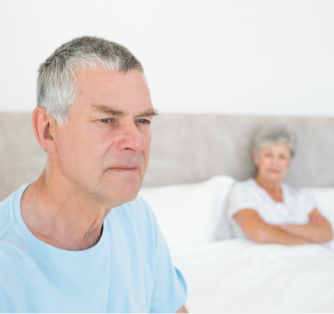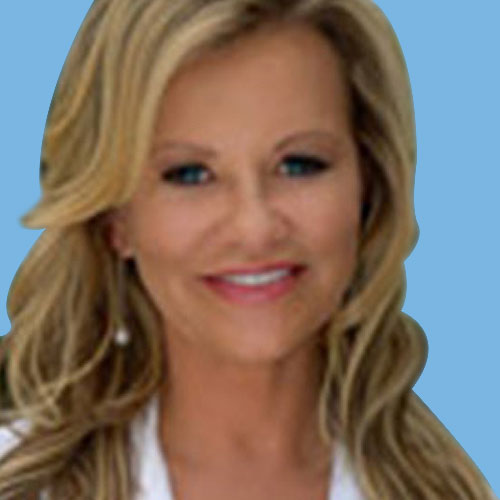Menu
Weight loss
Hormones
Sex
EXPLORE
MEET NU IMAGE MEDICAL
TREATMENTS
MEET NU IMAGE MEDICAL
TREATMENTS
MEET NU IMAGE MEDICAL
2 conditions: primary Hypogonadism vs Testicular Hypofunction


Testosterone is produced in the testicles. Itâs a fact. Testosterone is responsible for all aspects of a manâs growth and well-being. Everything from sex drive to physical characteristics is determined by this hormone. However, there are cases where testosterone is thrown out of whack.
If a man has low levels of testosterone, it can be the result of two conditions:Â primary hypogonadism or testicular hypofunction. Both of these conditions have negative effects on testosterone. While very similar in nature, primary hypogonadism and testicular hypofunction are two entirely different entities. But what are they exactly, and what are the key features of these conditions?
Today, weâll explain these conditions in detail and provide guidance if you find yourself experiencing the symptoms of either condition.Â
Primary hypogonadismÂ
Primary hypogonadism is a condition in which one or both functions of the testes are impaired. With primary hypogonadism, testosterone production and sperm production are decreased. These problems are often due to a condition of the pituitary gland and hypothalamus. When problems with the hypothalamus combine with pituitary gland, the end result is either primary hypogonadism, and in some cases, secondary hypogonadism.Â
With primary hypogonadism, the testicles do not react to hormone stimulation. Hormone stimulation tests are often done to determine if the pituitary gland releases ample amounts of growth hormone. The pituitary gland is a small gland located in the brain. It is roughly the size of a pea. A healthcare professional can perform a growth hormone test to determine if your body is releasing enough growth hormone.
Primary hypogonadism is also referred to as primary testicular failure, according to the Mayo Clinic. Originating from abnormalities in the testicles, primary hypogonadism can develop before puberty, during young adulthood, or even when one is in the womb. When symptoms appear will ultimately depend upon a number of factors.
Some men develop primary hypogonadism in later life. There are also cases where primary hypogonadism is caused by an infection or injury. Finding the right treatment can be a challenge and is often dependent on what caused the primary hypogonadism and the point at which you notice a problem.
Signs and symptoms of these conditions do not manifest themselves until the condition has fully developed. The signs and symptoms of primary hypogonadism are quite distinct. Individuals with primary hypogonadism may have ambiguous genitalia or genitals that donât resemble those of a male or female.
Some with primary hypogonadism may have underdeveloped male genitals. Primary hypogonadism can cause a delay in puberty, often to the point that it causes abnormal development. The development of muscle mass can be impaired by this condition as well. The deepening of oneâs voice, growth of facial and body hair, and penis and testicle growth may be stunted.Â
Primary hypogonadism can cause the arms and legs to grow excessively, often to the point that they look quite large when compared to the rest of a manâs body. It can also affect the development of breast tissue.Â
However, some symptoms may occur earlier than others. According to experts, decreased energy, a diminished sex drive, and depression are all key features of primary hypogonadism. As time goes by, a number of other symptoms may present themselves. A man with this condition may eventually develop erectile dysfunction (ED), an increase in body and facial hair, decreased muscle mass, and infertility.
Emotional and mental symptoms may manifest themselves in severe cases of primary hypogonadism. One may experience trouble concentrating and may have hot flashes. A man with hypogonadism may develop a depressed mood and may have diminished energy.Â
According to PubMed, hypogonadism has become extremely prevalent in the aging male population. Hypogonadism is linked to a number of problems, such as type 2 diabetes, metabolic syndrome, osteoporosis, and hypertension. If you have one of these comorbidities, your doctor will likely want you to visit a clinic for treatment.Â
Those with primary hypogonadism are also likely to have decreased energy, problems with libido, decreased bone density, and low levels of serum testosterone. A number of treatment options are available for those with primary hypogonadism. These include transdermal patches, testosterone injections, and testosterone pellets.Â
Testicular hypofunctionÂ
Testicular hypofunction is a condition in which the testes or gonads produce little testosterone or none at all. Testicular hypofunction often develops in the womb. This condition is often the result of a conglomeration of sexual disorders. A man may become infertile or develop low testosterone as a result of testicular hypofunction. Testicular hypofunction can also lead one to develop primary hypogonadism. Â
Testicular hypofunction comes from a problem in the testicles, and many men donât even know they have it. How is testicular hypofunction diagnosed? According to experts, testicular hypofunction is most common in older men who are over the age of 60. Men with testicular hypofunction typically have serum testosterone levels that are much lower than younger men.Â
A number of treatment options exist for men with testicular hypofunction. According to the Mayo Clinic, you can effectively treat testicular hypofunction in a number of ways. Testosterone replacement therapy (TRT) is a viable treatment option. However, it can cause problems with the liver, so it might not be the best option for everyone. If you want to give testosterone replacement therapy a try, be sure to proceed with caution.Â
This type of therapy can help counteract the symptoms of testicular hypofunction. Testicular hypofunction may originate primarily in the testes. It can also be secondary to an insufficiency in pituitary gonadotropic hormones or secondary hypogonadism.Â
Testicular hypofunction in itself can be acquired through genetics, or it can be acquired through certain factors. Although other treatment options for testicular hypofunction are limited, experts agree that âreproductive technologyâ may be effective in treating this condition. These techniques have been used successfully to assist couples who are unable to conceive naturally.Â
How is testicular hypofunction diagnosed? According to experts, one of the best ways to diagnose testicular hypofunction is by measuring serum total testosterone levels every morning. If levels are found to be low, this test should be done each morning. Experts say that testosterone replacement therapy will help restore bone density, muscle mass, and energy.Â
Experts also agree that TRT will cause oneâs sex drive to return, often to the point that conception can be facilitated. Because testosterone is responsible for sex drive and other male factors, normal testicular function is essential to regulate sex drive and produce male characteristics. Such characteristics include facial hair and the size of oneâs genitals.
Testicular hypofunction is often the result of an abnormality that forms during prenatal development. Fever, injury, tuberculosis, and mumps can also cause a man to develop testicular hypofunction, according to health professionals. This condition can also develop if undescended testicles are exposed to extremely high temperatures.Â
This doesnât necessarily mean that being out in the heat is going to cause testicular hypofunction. However, it is important not to expose your testicles to high temperatures on a regular basis. If testicular hypofunction begins before one enters puberty, secondary sex characteristics may not develop like theyâre supposed to. As a result of this, sex organs may not grow to their full capacity, and body hair may not grow.
Oneâs voice may not change, if they have this condition. Some people may not become fertile. Another consequence of this condition is an undeveloped libido. Libido is essential for procreation, so it is important to find ways to effectively treat and minimize the effects of this condition. Surgery is another possible treatment, and a doctor may administer testosterone.Â
There may be cases where testicular hypofunction is caused by anterior pituitary disease. If testicular hypofunction is caused by anterior pituitary disease, your doctor may administer gonad-stimulating hormone. Testicular hypofunction is not common, because it occurs only when both of a manâs testicles are âdamaged,â according to WRS Health.
Even though mumps affect the testicles, it very rarely causes infertility. Because of this, many experts recommend getting the mumps vaccine. In fact, some say it may help to get vaccinated for mumps when one is an infant. To avoid developing this condition, it is important to wear athletic supporters to avoid injury to the testicles.Â
You should also engage in athletics in moderation to avoid damage. Professionals also advise that you avoid clothing that restricts the movement of the testicles. Do not restrict movement, as movement helps the testicles maintain an optimal temperature. This condition can also cause your sex drive to suddenly decrease, and you may experience emotional issues. Trauma can also worsen this condition.Â
However, a drop in sex drive is a natural part of aging. Because of this, it might not necessarily be caused by testicular hypofunction. External factors may be to blame as well. Lowered sex drive in itself is not a condition, but instead is often the consequences of conditions like hypogonadism.Â
Do not treat this issue with testosterone. Instead, consult with your doctor to see if he or she can make suggestions. It is always a good idea to consult a professional for a condition, such as testicular hypofunction. Â
Â
Â
11 Sources
Nu Image Medical has strict sourcing guidelines to ensure our content is accurate and current. We rely on peer-reviewed studies, academic research institutions, and medical associations. We strive to use primary sources and refrain from using tertiary references.
https://www.uptodate.com/contents/causes-of-primary-hypogonadism-in-males
https://www.mayoclinic.org/diseases-conditions/male-hypogonadism/symptoms-causes/syc-20354881
https://www.mayoclinic.org/diseases-conditions/infertility/symptoms-causes/syc-20354317
https://www.ncbi.nlm.nih.gov/pmc/articles/PMC2948422/
https://clinicalgate.com/hypofunction-of-the-testes/
https://www.ncbi.nlm.nih.gov/pmc/articles/PMC3312212/
https://www.mayoclinic.org/diseases-conditions/male-hypogonadism/diagnosis-treatment/drc-20354886
https://ehr.wrshealth.com/patient_v2/instructions.php?id=2425855&iid=4051
https://byjus.com/biology/gonads/
This article is for informational purposes only and does not constitute medical advice. The information contained herein is not a substitute for and should never be relied upon for professional medical advice. Always talk to your physician about the risks and benefits of any treatment. Nu Image Medical may not offer the medications or services mentioned in this article.
